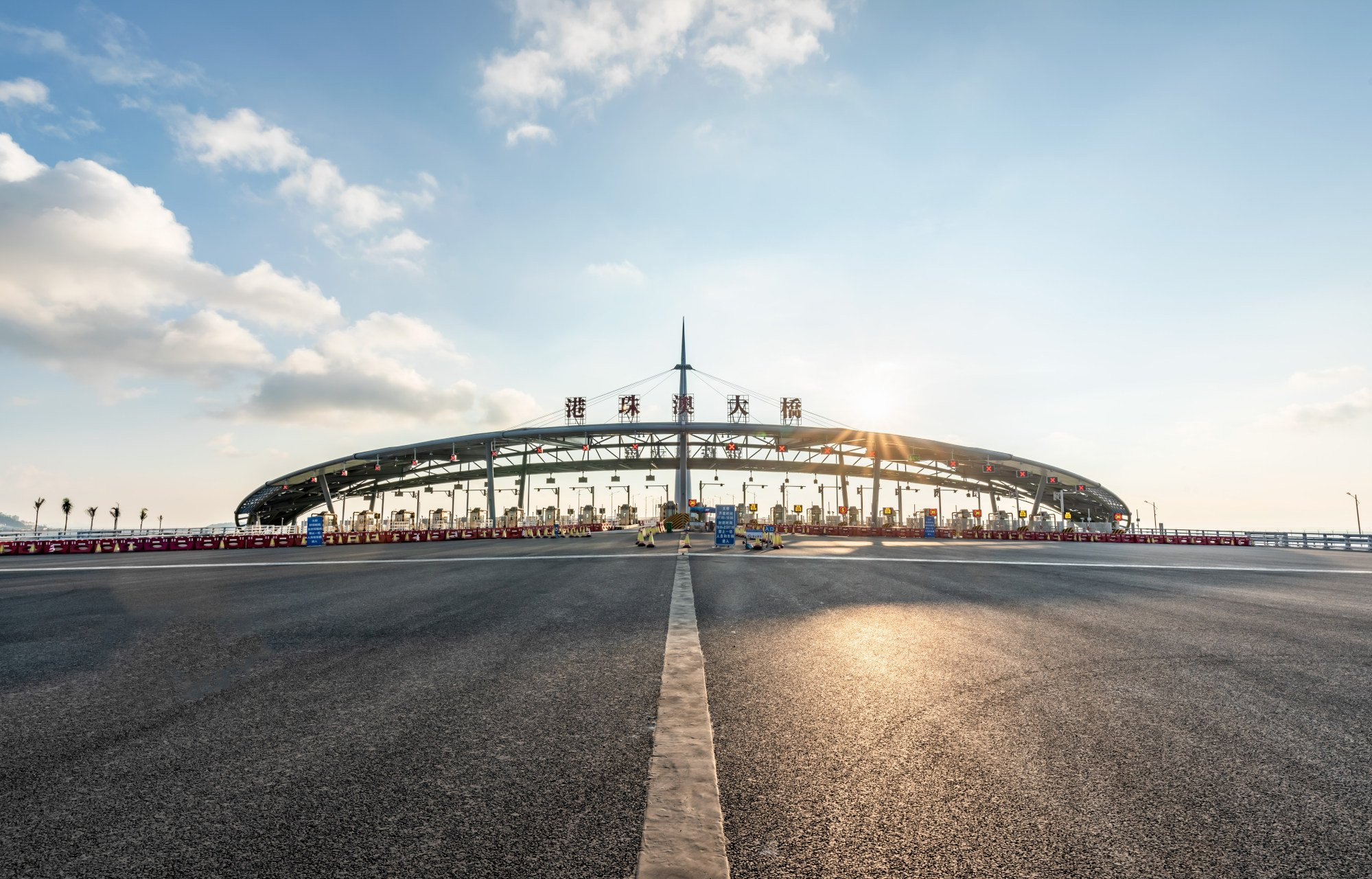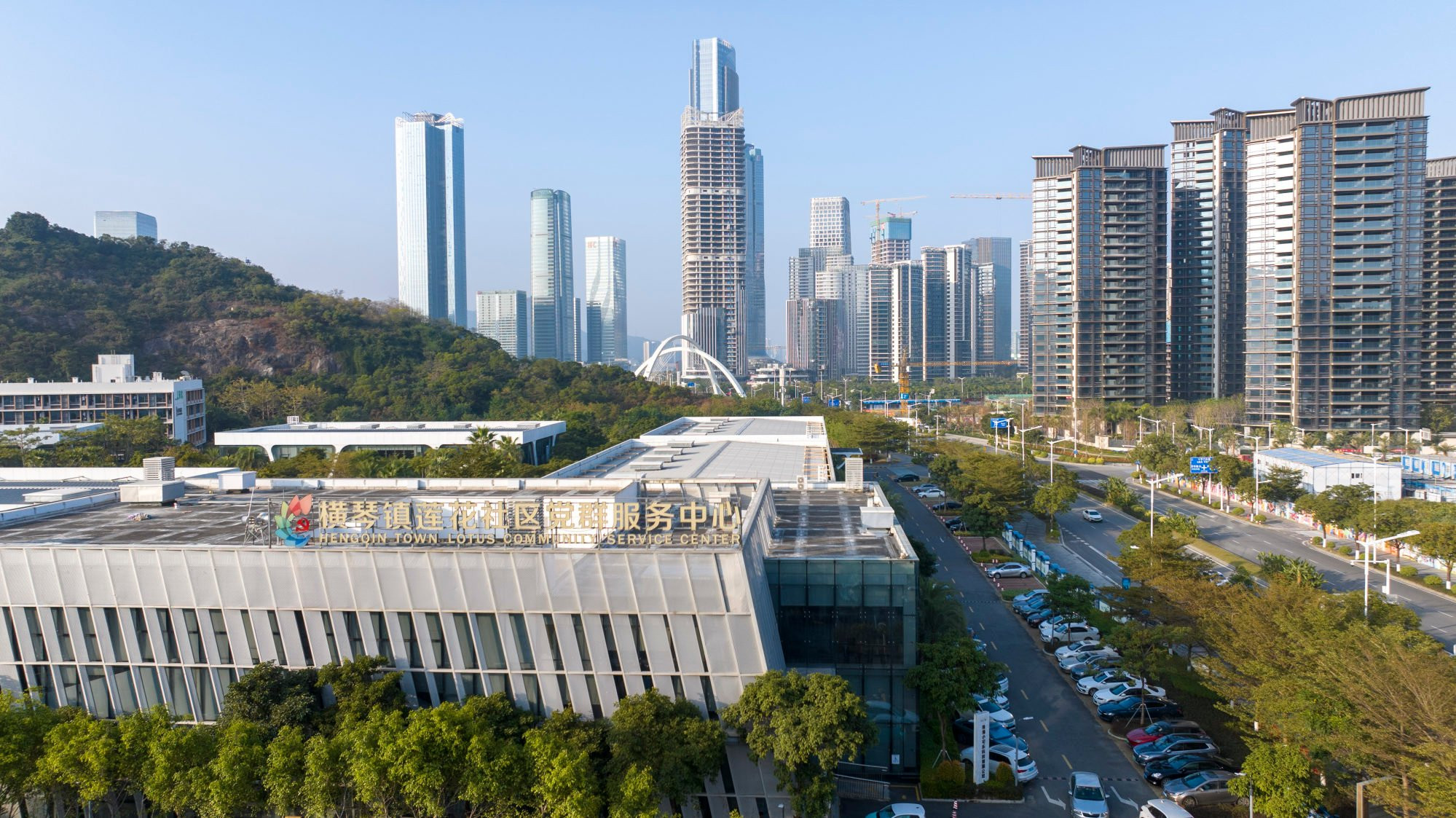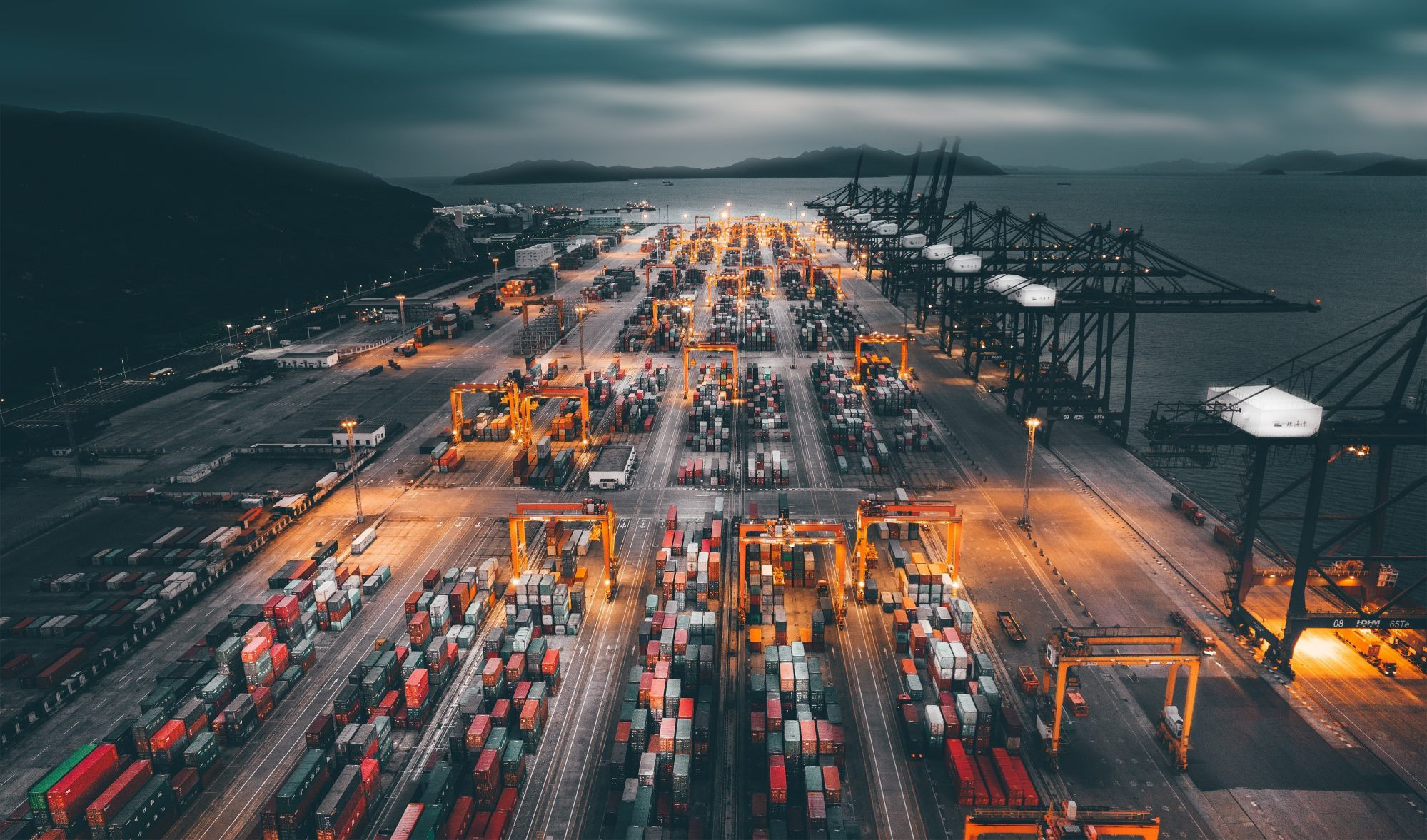Five years ago, the the Guangdong-Hong Kong-Macau Greater Bay Area (GBA) Development Plan was unveiled. By leveraging the strengths of nine cities and two special administrative regions in south China, the GBA was widely considered a front runner in the nation opening its economy to the broader world.
In 2023, the total economic output of the GBA was estimated to exceed 13.6 trillion yuan, an increase of about 3.8 trillion yuan from 2018. With less than 1 per cent of the country’s land area and 6 per cent of the total population, it generated 11 per cent of its GDP. Over the years, China’s contribution to world economic growth has been around 30 per cent. This means that the GBA has played a significant role in the global economy.
One-hour living circle

The high-speed train of Guangzhou-Shenzhen-Hong Kong Express Rail Link departs from West Kowloon Station. Photo: Lu Li
Targeted for development as an integrated economic and business hub, the GBA is home to nine cities in Guangdong province, as well as the special administrative regions of Hong Kong and Macau. The cities have different roles in the GBA, and their unique strengths form a strategic stronghold for the new development pattern.
Many infrastructure projects have been completed to facilitate travel and communication between all the cities, including the Hong Kong-Zhuhai-Macau Bridge (HZMB), which is the longest sea-crossing bridge in the world, the Guangzhou-Shenzhen-Hong Kong Express Rail Link (XRL), and the Shenzhen-Zhongshan Link, which will reduce the travel time between Shenzhen and Zhongshan.
More than 16.3 million inbound and outbound passengers, and 3.26 million vehicles, passed through the HZMB’s Zhuhai port in 2023, 1.29 times and 3.8 times more than 2019, respectively. In 2023, the highest single-day passenger flow via the bridge reached 115,000.
For the XRL, statistics show that in 2023, the railway transported 10.856 million passengers from the Chinese mainland to Hong Kong and 10.413 million passengers from Hong Kong to the Chinese mainland.
Gradually taking shape

Entrance to the Hong Kong-Zhuhai-Macau Bridge, which has shortened journey times and tightened bonds across the region. Photo: Getty Images
Meanwhile, the GBA set innovative rules for better integration and to create a better environment for public services, promoting the efficient and convenient flow of people, logistics, capital and information.
Mutual recognition of professional qualifications was implemented in fields including education, legal and medical care. Many such programmes were established, like the Hong Kong and Macau Medicine and Equipment Connect policy, and Shenzhen-Hong Kong Stock Connect, Southbound Bond Connect, and cross-boundary Wealth Management Connect scheme. Along with preferential fiscal and tax policies, these measures helped attract more Hong Kong and Macau residents to live in GBA mainland cities.
Over 200,000 Hong Kong and Macau residents are now working in Guangdong province, drawn by the promising prospects, diverse and booming industries, and talent subsidies.
Exploration for innovation

Hengqin. Photo: Liang Jucong
For years, rules were rolled out to strengthen the GBA’s economic development. The region was turned into a scientific, technological and industrial hotbed to create a better environment for innovation and growth, fast becoming a demonstration zone for high-quality development.
Last month, Guangdong held a provincial high-quality conference in Shenzhen on the first working day after the Lunar New Year holiday. The conference put emphasis on the combination of sci-tech innovation and industrial development.
Huang Kunming, party secretary of Guangdong, stressed the importance of sci-tech innovation and high-quality development, and urged companies, industries and society to get involved.
The province will encourage enterprises to use new technologies, equipment, materials and processes to improve product quality and production efficiency. Such transformation will improve enterprise production technology, revitalise traditional industries, bolster emerging industries and foster future industries.
The Global Innovation Index (GII) 2023, published by the World Intellectual Property Organization, ranked the Shenzhen-Hong Kong-Guangzhou science and technology cluster second globally for the fourth consecutive year.
The latest data indicated that in 2023, Guangdong’s total R&D expenditure was around 460 billion yuan, accounting for 3.39 per cent of the provincial GDP. In terms of enterprises, the province had 2.577 million “four new” economy businesses (technologies, industries, formats and models), accounting for 32.9 per cent of the total number of enterprises, representing a growth of 13.9 per cent from the previous year.
Four major cooperation platforms were formed to explore more possibilities for GBA’s innovative development.
The Guangdong-Macau In-Depth Cooperation Zone in Hengqin is expected to become a strong growth engine for the Guangzhou-Zhuhai-Macau science and technology innovation corridor and has helped promote diversity in Macau’s economy.
The Qianhai Shenzhen-Hong Kong Modern Service Industry Cooperation Zone established an innovation-driven development model featuring industrial synergy and market connectivity with Hong Kong and Macau. It became a new international trade centre, an international high-end shipping service centre and an engine for high-quality development.
Nansha District in Guangzhou will seek to deepen industrial cooperation with Hong Kong and Macau and boost public services for business start-ups, education and healthcare.
The Shenzhen section of the Hetao zone for science and technology innovation cooperation is expected to become a world-class research hub that enjoys a free and orderly cross-border flow of innovation factors, solidly supporting the development of the Guangzhou-Shenzhen-Hong Kong-Macau sci-tech innovation corridor.
More foreign capital inflow

The container terminal at Zhuhai Port under the night sky, brightly illuminated with bustling activity. Photo: Liang Qilin
The GBA has a long history of foreign capital inflow and has long been considered one of China’s most favourable investment destinations due to its diverse and dynamic industrial ecosystem, affluent local consumer base, and ability to attract highly skilled professionals, marking the area as a bellwether of Chinese modernisation.
According to the latest report on the state of business in south China released by the American Chamber of Commerce in South China (AmCham South China), 75 per cent of the companies surveyed considered the overall business environment in the region as “excellent” or “good”.
Most foreign enterprises, especially those engaged in manufacturing, are willing to continue investing in the GBA. According to the latest data, in 2023 Guangdong’s actual utilisation of foreign investment in the manufacturing industry reached 49.22 billion yuan, a year-on-year increase of 11.7 per cent, accounting for 30.9 per cent of the province’s total actual foreign investment, which reached a five-year high.
“The GBA is the future of China’s economy with promising prospects. Major cities in the GBA now enjoy complementary advantages,” said Harley Seyedin, president of AmCham South China.
William Huang, the managing partner of EY China South, believes that compared with the New York Bay Area, San Francisco Bay Area and Tokyo Bay Area, the GBA features the most significant advantages in complementary industrial integration and development. In recent years, with the construction of the Guangzhou-Shenzhen-Hong Kong-Macau Sci-tech Innovation Corridor, high-end elements of innovation continue to gather in the area, and the integration of industry, university and research is also constantly strengthening. Cities such as Dongguan and Foshan are developing intelligent manufacturing, enabling the related industry in this region to realise overall transformation and upgrade.
In 2021, international energy company ExxonMobil started a project in Huizhou, a GBA mainland city, to produce performance polymers used in packaging, automotive and agricultural products. One of the few petrochemical complexes in China wholly owned by a foreign investor, the US oil and gas giant invested over US$17.55 billion in fixed assets in the project and a paid-in investment of US$1.42 billion by the end of 2022.
“When ExxonMobil decided to invest more than US$10 billion in a world-scale chemical complex, we quickly realised that Guangdong province was the right choice because of its professional and efficient government, well-developed infrastructure, business-friendly environment and rich pool of highly skilled local workforce,” said Jean-Marc Taton, chairman of ExxonMobil China.
By Hu Nan
















